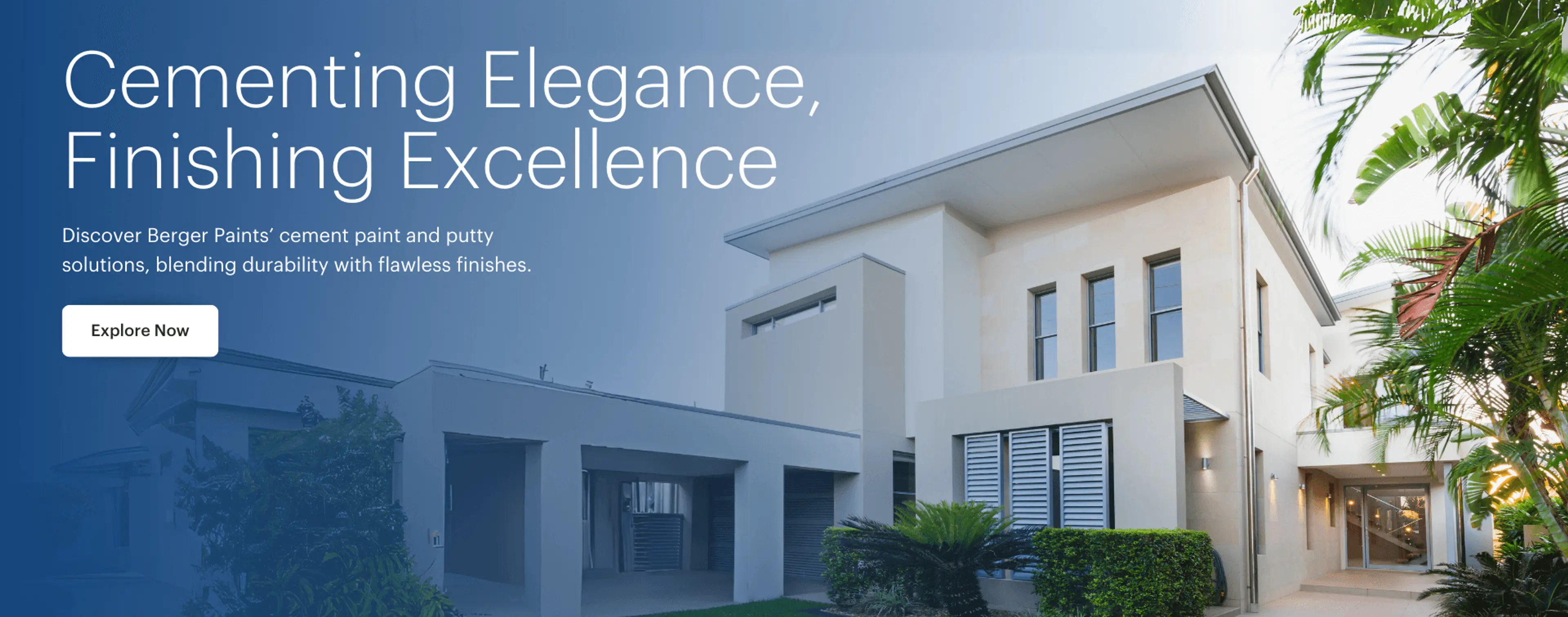

Wall Putty and Cement Paints
Cement and Wall Putty
Wall Putty and Cement Paint for Smooth Walls
Before painting, walls need a proper base. That's because a rough, uneven wall will fail to hold the paint well and will crack faster. That’s where wall putty and cement paint come in. Acrylic putty makes walls even, while cement putty strengthens them.
If you want easy painting, go for acrylic wall putty. If you need brighter walls, white putty does the job. Picking the best wall putty means your walls will look good for years.
We recommend going through this guide to wall putty for some interesting insights and practical tips.
Types of Wall Putty: Acrylic and Cement-Based
- Acrylic putty: Made from acrylic resins, this putty is pre-mixed and dries quickly. It creates a smooth foundation for paint and is great for indoor walls.
- Cement putty: This is made of white cement and fillers. It is best for walls that need extra strength. White cement paint goes well with cement putty for a clean, long-lasting look.
Benefits of Using Wall Putty and Cement Putty
- No cracks: Wall repair putty keeps paint from peeling and chipping.
- Smooth walls: A putty coat evens out bumps and dents before painting.
- Better paint results: Paint looks more professional on putty finish walls. Even paint colours look better when the paint finish is smoother. For tips on how to select the perfect colour and colour combinations for your home, we recommend exploring a colour catalogue. Not only will this give you colour palette ideas, but it will also help you select the right paint finish and ultimately the proper type of wall putty and cement paint.
- Protection from rain and heat: The best putty for exterior walls helps walls last longer.
How to Apply Wall Putty for a Perfect Finish
- Clean the wall: Remove any dust, grease, or loose plaster.
- Apply the first putty coat: Spread it evenly with a trowel or knife.
- Let it dry: Putty finish walls need at least 4-6 hours before the next step.
- Sand the wall: This removes rough patches.
- Apply another coat: This gives an even better foundation.
- Wait before painting: The wall must be completely dry before you apply any of the wall paints.
Choosing the Right Putty for Interior and Exterior Walls
- Indoor walls: Acrylic putty for exterior walls dries fast and makes painting easier.
- Outdoor walls: Exterior putty for walls resists weather effects and lasts longer.
- Wall fixes: Wall filler putty is useful for repairing holes and cracks.
Cement Paint vs. Wall Putty: Which One to Use?
- Cement wall paint is a thick paint that works well outdoors.
- Cement paint outdoors protects against moisture and dust.
- Wall putty helps create an even foundation for paint.
- Exterior cement paint adds an extra protective layer.
Frequently Asked Questions
The cement paints we offer at Berger Paints are a specialized coating that incorporates cement as a base, offering enhanced durability and weather resistance compared to regular paint. Unlike traditional paint, Berger's cement primer paint forms a robust bond with surfaces, providing long-lasting protection against harsh environmental conditions while maintaining a distinctive finish. Its unique composition ensures superior adhesion and resilience, making it an ideal choice for both interior and exterior applications.
Berger Paints' cement putty options serve as the perfect base by smoothing surfaces for paint application, promoting strong adhesion, and enhancing resistance to cracks. Our versatile range of cement putty efficiently covers surfaces and optimizes paint usage too. Whether for interior or exterior applications, Berger's cement putty provides a reliable foundation for achieving high-quality finishes.
Yes, we at Berger Paints do offer solutions that can be used on interior and exterior surfaces both. However, there may be some specific to either type. Interior undercoats focus on providing a smooth base, minimizing imperfections and enhancing the adhesion of subsequent layers, while exterior undercoats prioritize weather resistance and protection against harsh elements, safeguarding the painted surface from external challenges such as UV rays and moisture.
Berger Paints' cement paint and putty play a crucial role in promoting adhesion by providing a stable and receptive surface for the topcoat. It creates a bond between the substrate and the paint, enhancing the paint's ability to grip and adhere effectively. The undercoat smoothens the surface, minimizes imperfections, and seals porous areas, ensuring that the paint adheres uniformly and durably.
Acrylic putty is easy to use and dries quickly, which is what makes it a great choice for the walls inside the house. Whereas cement putty makes walls stronger and is better suited for both indoor and outdoor use. Acrylic wall putty is more suitable for homes where a smooth finish is required, while cement putty provides a stronger base for paint, especially in humid places like Mumbai.
A putty coat usually takes 4-6 hours to dry completely, but this changes based on humidity and temperature. For the best results, wait at least 24 hours before painting. Putty finish walls should be completely dry before any painting.
To remove wall putty, use a scraper or sandpaper. If the putty layer is thick, you can also use water to soften it before scraping. For painted walls, sandpaper will help remove the putty finish without damaging the paint. If wall repair putty was used, it could take more effort to remove it properly.
Some types of wall putty are water-resistant, but there is no fully waterproof putty. To prevent water damage, you will need to combine cement paint for exterior walls with putty. Exterior putty for walls is better for areas exposed to rain.
Cement paint outdoor applications include walls, driveways, and other surfaces that need extra protection. It is a good option for houses in rainy areas since it helps protect against moisture. Cement wall paint is also commonly used for rough-textured walls.
Yes, exterior cement paint has water-resistant properties that help walls withstand rain and humidity. However, for the best protection, apply primers before applying cement paint outdoors.
Primer is not always necessary before using cement wall paint, but it can improve the paint’s lifespan. If the wall has wall putty applied, primer helps create a better bond between the putty and paint. If cement paint for exterior walls is used directly on a rough wall, applying primer first helps in getting an even colour.
